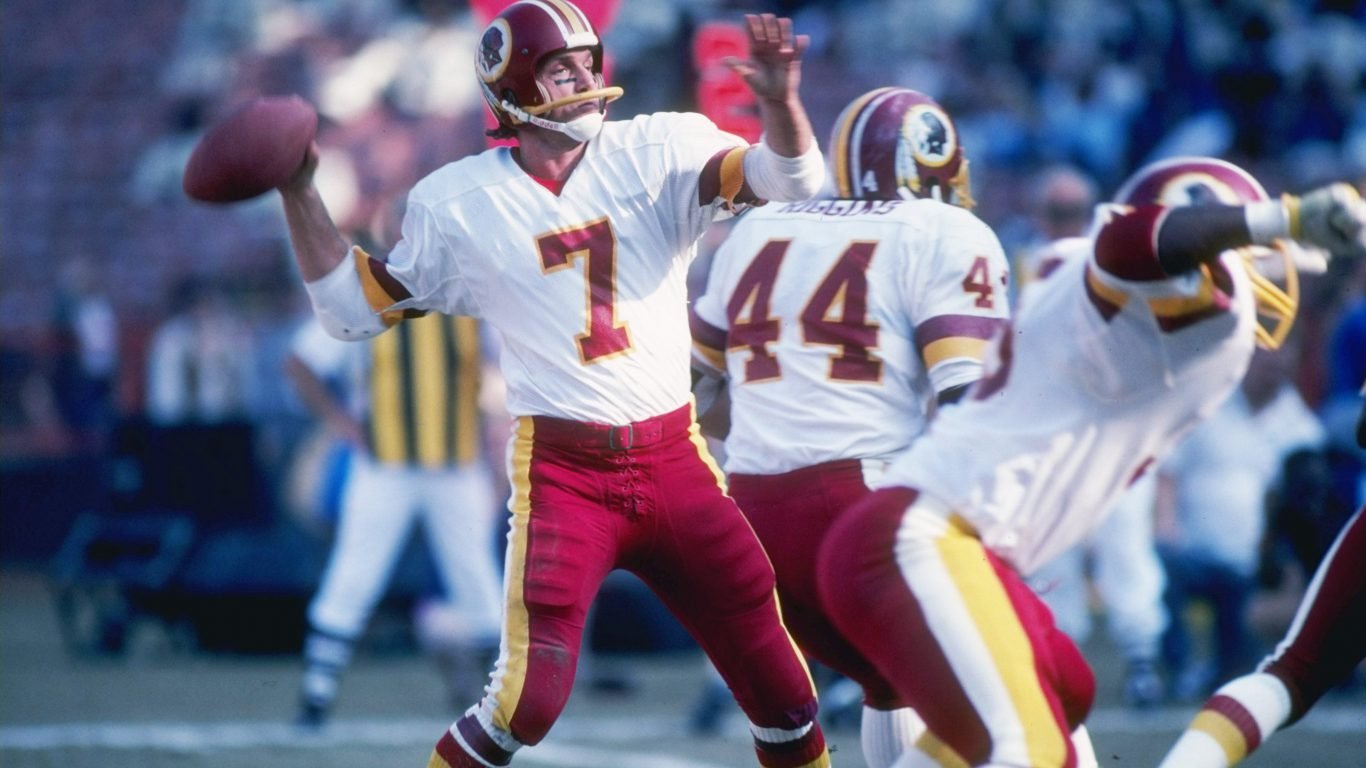

When athletes push their bodies to the limit against other top competitors, injuries are unavoidable. Spectacular careers have ended with one wrong step or a devastating hit, and once-promising young athletes, as well as established ones, have seen their careers end prematurely.
Players of all skill levels have had their careers ended or drastically impacted by a major injury. Many of the most upsetting moments in sports history have come when all-star-caliber players were hurt.
Football and hockey are particularly rough contact sports. Concussions stemming from hard hits are prevalent in the NHL and NFL, though basketball and baseball players are not completely safe. MLB stars have suffered career-ending injuries from errant pitches and foul balls striking their heads. And basketball players often risk head, neck, and spinal injuries when jumping high for baskets or rebounds.
To determine the greatest sports careers cut short by injuries, 24/7 Wall St. reviewed the history of the NFL, MLB, NHL, and NBA for successful and promising players whose careers were either ended or dramatically altered by an injury.
Click here to see the 23 greatest athletes sidelined by brutal injury.
Some players can come back from awful injuries. Shaun Livingston had a grisly knee injury but has become an important bench player and three-time NBA champion with the Golden State Warriors. Sidney Crosby has suffered several concussions but has always come back strong.
Many of the players on this list had enough great seasons that they still made the Hall of Fame. The NFL’s Terrell Davis and MLB’s Sandy Koufax had dominant but abbreviated careers, winning championships and MVP awards. Still, their legends may have been even greater if not for Davis’s knee injury and Koufax’s arthritic elbow.
Many players’ careers could have continued longer had they been injured today thanks to advances in modern medicine. Injuries to a player’s rotator cuff or anterior cruciate ligament once spelled disaster for a career, but new surgeries and rehabilitation techniques have allowed players to come back from such injuries and even play at an MVP level. Running back Gale Sayers had to retire early after damaging his knee ligaments, but Adrian Peterson was an All-Pro rusher for the Minnesota Vikings the year after tearing his ACL. An undiagnosed rotator cuff ruined the career of 1969’s AFL Rookie of the Year Greg Cook, but fellow QB Drew Brees won a Super Bowl with the New Orleans Saints after overcoming a similar injury.
To determine the greatest sports careers cut short by injuries, 24/7 Wall St. reviewed the history of the NFL, MLB, NHL, and NBA to find successful and promising players whose careers were either ended or dramatically altered by an injury sustained either on or off the field. To be considered, an athlete had to have been a notable player, either through on-field success or a promising start.

1. Billy Sims
> League: NFL
> Position, Team: Running back, Detroit Lions
> Career: 1980-1984
> Injury: Knee
After winning the 1978 Heisman Trophy at the University of Oklahoma, running back Billy Sims was drafted first overall by the Detroit Lions in 1980. Sims was an immediate star, winning the 1980 Offensive Rookie of the Year award and making the Pro Bowl his first three seasons. Sims’ career ended abruptly in a 1984 game against the Minnesota Vikings, when his knee twisted awkwardly, damaging multiple ligaments. Despite a year of rehab, he never played again. Sims now owns and operates a chain of barbecue restaurants bearing his name.
[in-text-ad]

2. Bo Jackson
> League: NFL
> Position, Team: Running back, Oakland Raiders
> Career: 1987-1990
> Injury: Hip
Bo Jackson is one of the most electrifying athletes in recent history. The Heisman Trophy winner from Auburn is still the only person in history to be an MLB All-Star and make the NFL Pro Bowl. During a 1991 NFL playoff game against the Cincinnati Bengals, Jackson suffered a fractured and dislocated hip. The injury was later complicated by a condition that impeded blood flow to the injured area and destroyed bone cells. The hip injury prevented Jackson from playing another down of football. He later returned to baseball but couldn’t play a full season. Both his sports careers were over at age 31.
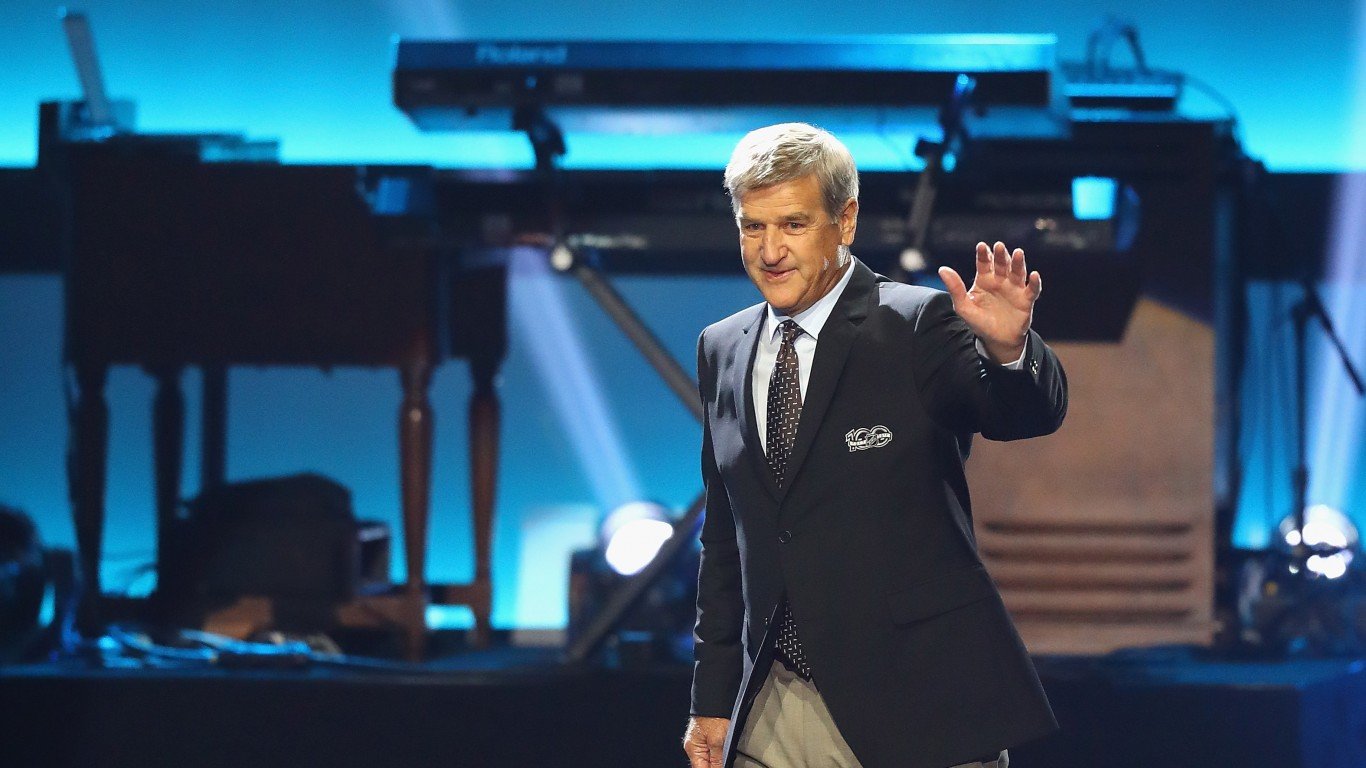
3. Bobby Orr
> League: NHL
> Position, Team: Defenseman, Boston Bruins
> Career: 1966-1978
> Injury: Knee
In his illustrious career, Bobby Orr won nearly every award and accomplished just about any feat possible in pro hockey, including two Stanley Cups, nine All-Star appearances, and three MVPs. What makes it even more impressive is that Orr’s accolades all came before he turned 28. Orr led the NHL in points during the 1974-1975 season, but due to a series of knee injuries it was his last great stretch. Orr played only 36 more games over four seasons before his knee issues forced him out of the NHL at the early age of 30.

4. Brandon Roy
> League: NBA
> Position, Team: Shooting guard, Portland Trail Blazers
> Career: 2006-2011, 2012
> Injury: Knee
Brandon Roy seemed set for NBA stardom. He won the 2006-2007 Rookie of the Year award and made the All-Star game each of the next three years. However, Roy’s body couldn’t keep pace with the grind of an NBA season. He underwent six knee surgeries and no longer had any cartilage in them, so he retired after the 2010-2011 season. He attempted a comeback after one season of retirement but could only muster five games before hanging it up again.
[in-text-ad-2]
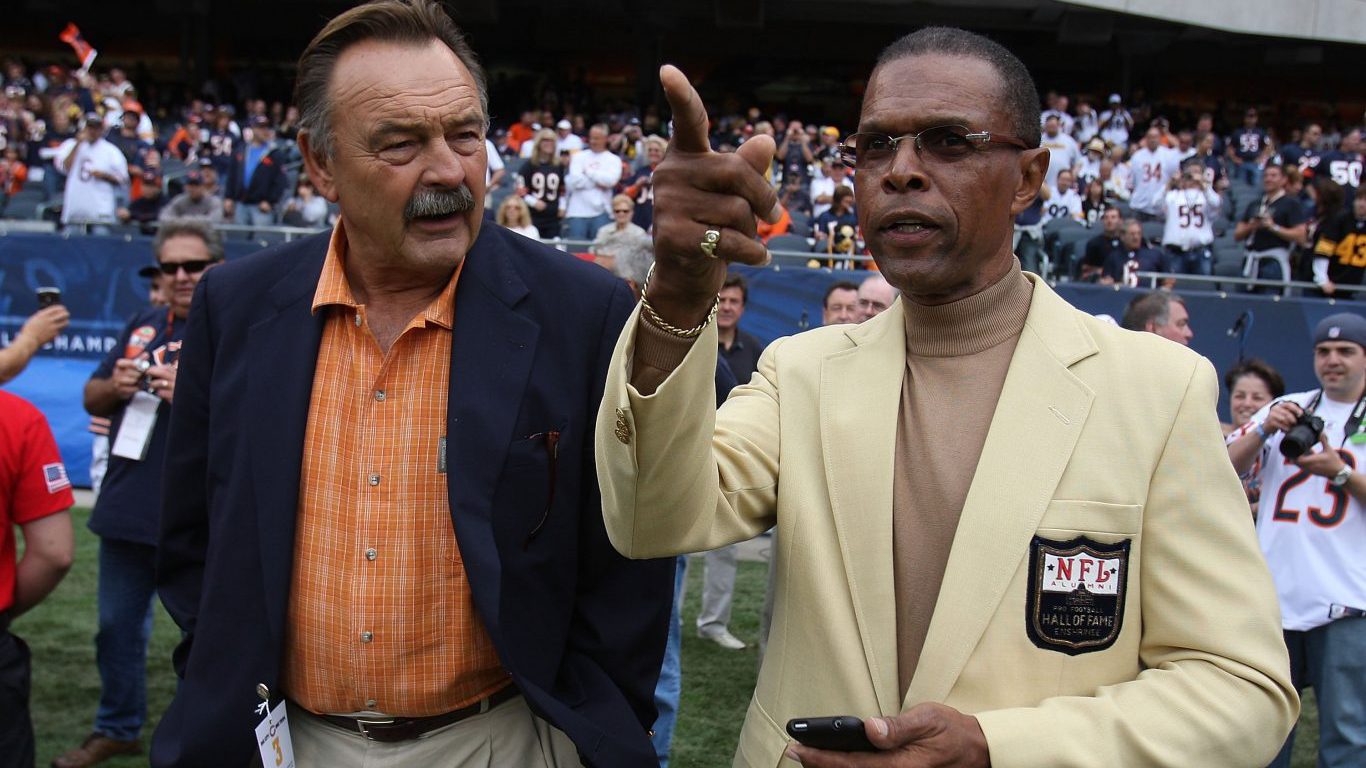
5. Gale Sayers
> League: NFL
> Position, Team: Running back, Chicago Bears
> Career: 1965-1971
> Injury: Knee
Gale Sayers was named First Team All-Pro in each of his first five NFL seasons, including a near-miraculous recovery season in 1969, the year after he tore the ACL and MCL in his right knee. Another ligament injury in a 1970 exhibition game, this time to Sayers’ left knee, essentially ended the career of the “Kansas Comet.” Sayers was only able to play two games apiece in 1970 and 1971 and retired at age 28.

6. Greg Cook
> League: AFL/NFL
> Position, Team: Quarterback, Cincinnati Bengals
> Career: 1969, 1973
> Injury: Shoulder
Greg Cook is one of the great “What Ifs” in sports history. Cook was named AFL Rookie of the Year in 1969 with his hometown Cincinnati Bengals. However, he played much of that season with an undiagnosed torn rotator cuff in his shoulder. The injury went untreated and by the time Cook and the Bengals opted for surgery, it was too late. Cook was never able to play at the promising level he once did. Cook suited up years later for one more game in 1973, but he never played after that.
[in-text-ad]
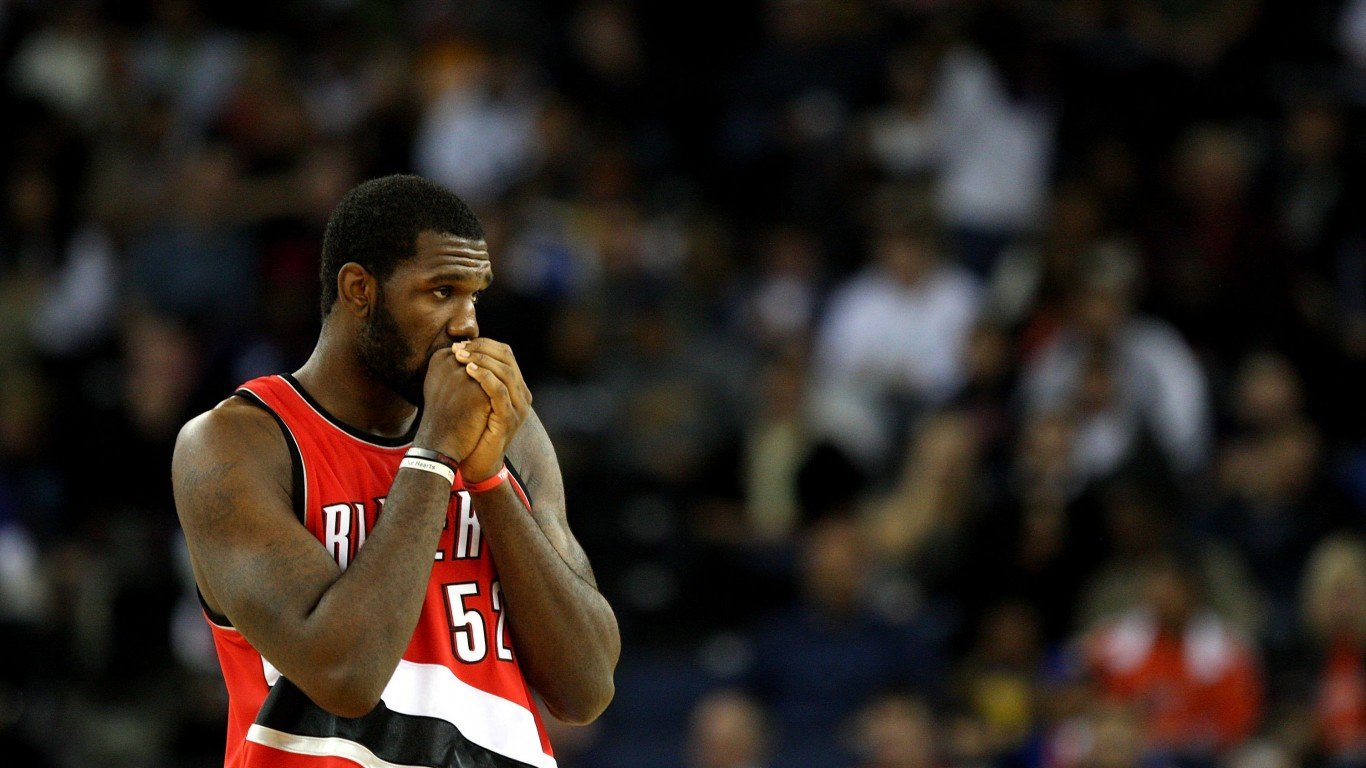
7. Greg Oden
> League: NBA
> Position, Team: Center, Portland Trail Blazers
> Career: 2008-2009, 2014
> Injury: Knee
Greg Oden was described as a can’t-miss talent and was drafted first overall in the 2007 NBA Draft. Oden’s first season was delayed because of a microfracture surgery on his right knee, but he showed promise when he debuted a year later. That season, however, would prove to be the only one in which Oden could play the majority of a season. In the 2009-2010 season, he played just 21 games before fracturing his left patella. A string of leg problems kept him out for three full seasons before he came back in 2014 with the Miami Heat. Oden again played just a fraction of the season before leaving the NBA for good.
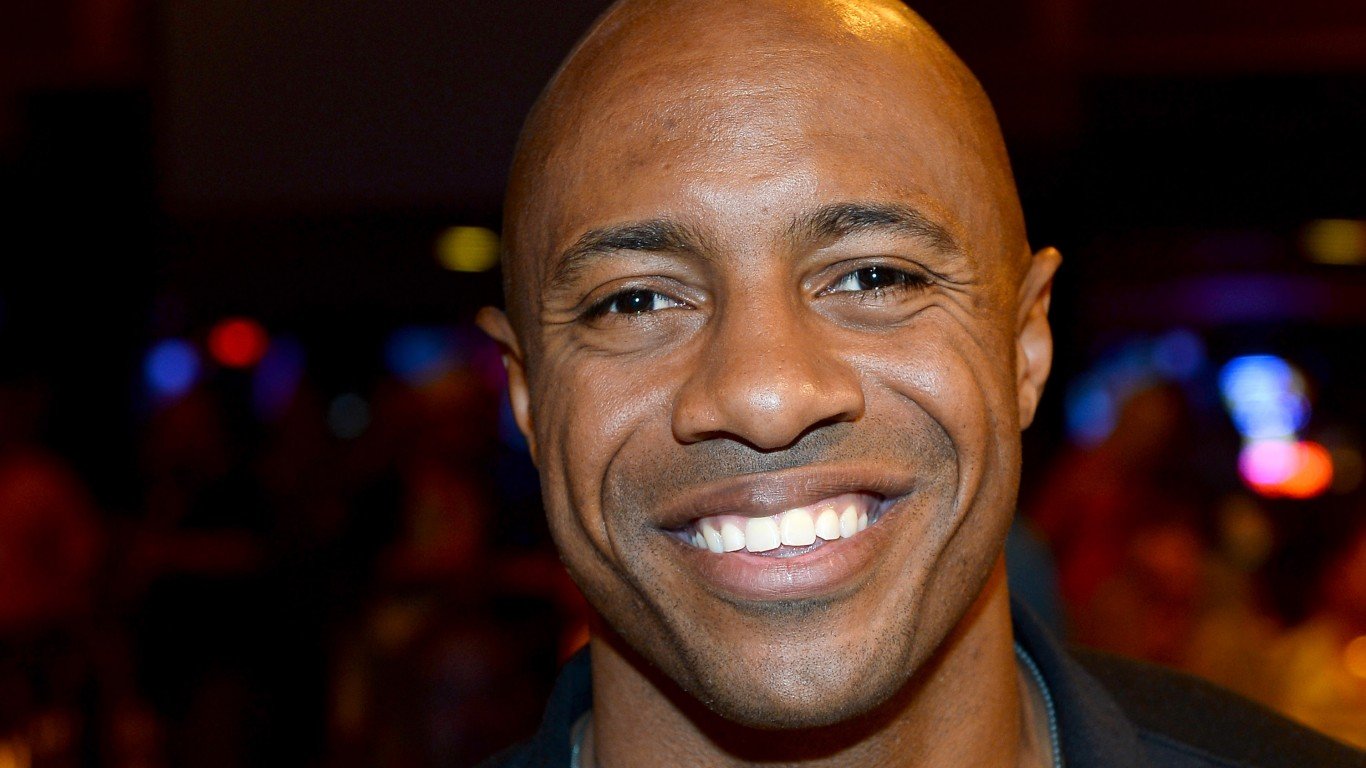
8. Jay Williams
> League: NBA
> Position, Team: Point guard, Chicago Bulls
> Career: 2002-2003
> Injury: Pelvis
Jay Williams seemed to be set for years of NBA stardom. He was a McDonald’s All American in high school and a two-time All-American in college at Duke. He was named to the 2002-2003 All-Rookie team after being drafted second overall by the Chicago Bulls. But Williams was severely injured in a motorcycle crash in 2003, shattering his pelvis and injuring his knee. He was never able to play in the NBA after his rookie season.

9. Joe Theismann
> League: NFL
> Position, Team: Quarterback, Washington Redskins
> Career: 1974-1985
> Injury: Leg
Joe Theismann enjoyed a very successful career as quarterback of the Washington Redskins, but was unable to retire on his own terms after suffering one of the most gruesome injuries in American sports history. New York Giants linebacker Lawrence Taylor sacked Theismann during a Monday Night Football game, causing the fibula and tibia in his right leg to snap so severely that the leg was slightly shorter when it fully healed. Theismann had enjoyed a lengthy career, winning a Super Bowl and an MVP, but he would have been able to play longer if not for the injury.
[in-text-ad-2]
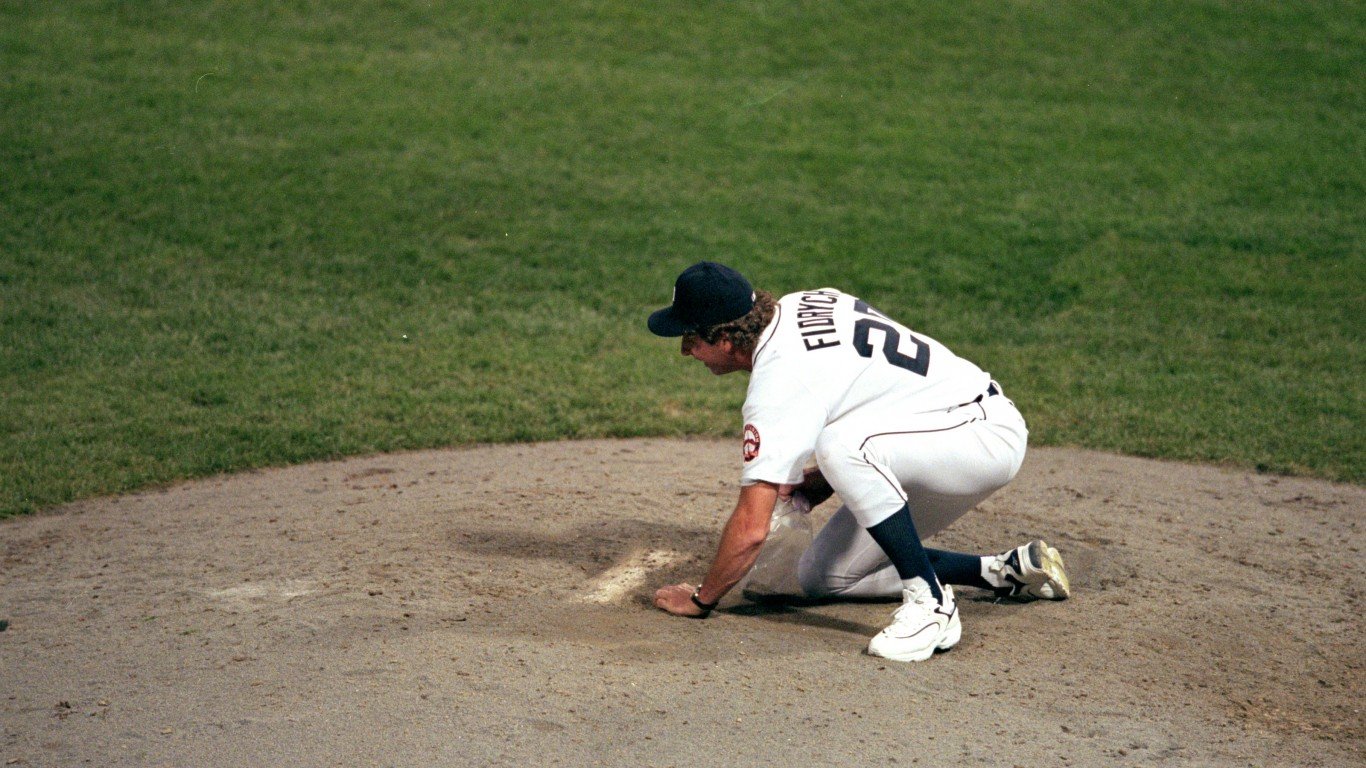
10. Mark Fidrych
> League: MLB
> Position, Team: Pitcher, Detroit Tigers
> Career: 1976-1980
> Injury: Shoulder
Mark “The Bird” Fidrych burst onto the MLB scene in 1976 by winning 19 games with a league-best ERA of 2.34 at 21 years old. Detroit Tigers games in which Fidrych pitched became must-see TV, not just for his brilliant pitching, but also for his bizarre in-game behavior. Fidrych would meticulously move dirt around on the mound and talk to himself between pitches. The Bird picked up where he left off in 1977 until he was sidelined by a knee injury. His career was ultimately ended by an undiagnosed rotator cuff injury. Fidrych was only able to play a handful of games per year before retiring after the 1980 season.
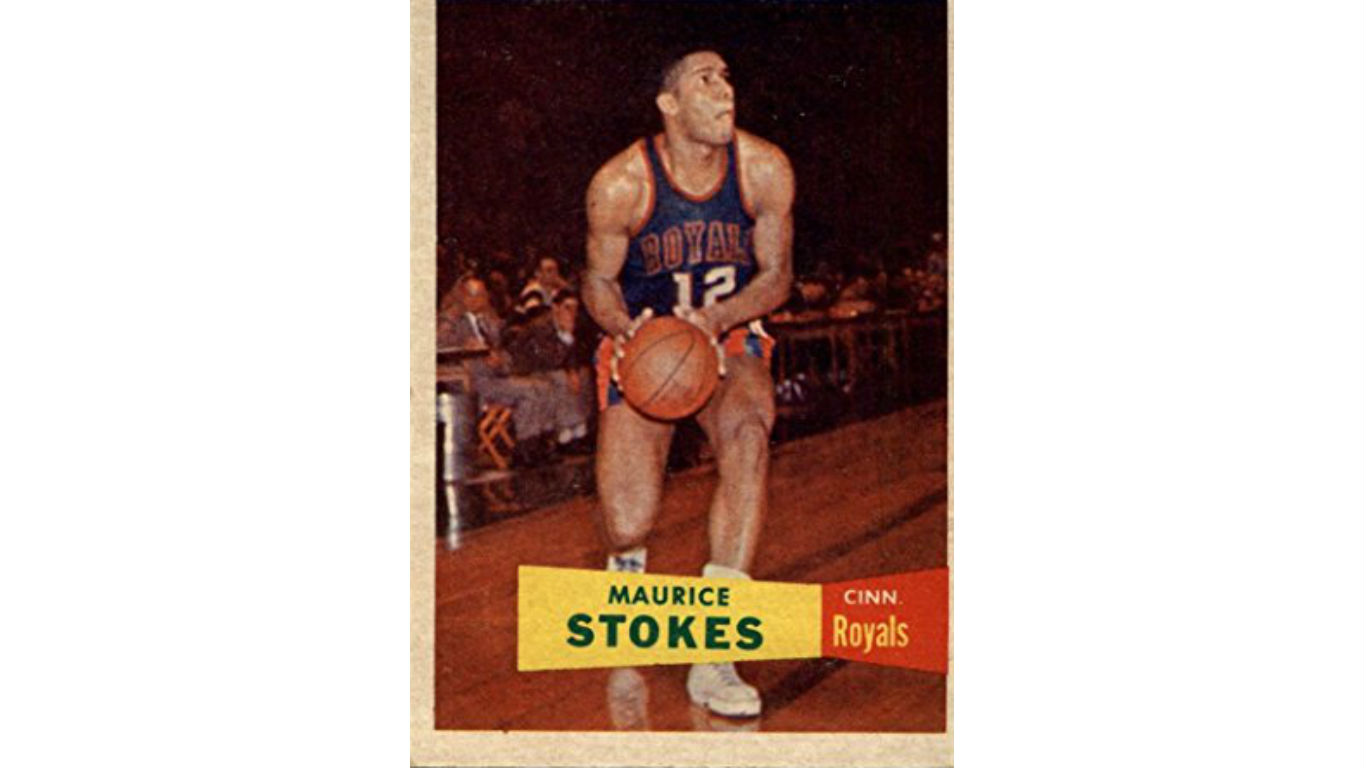
11. Maurice Stokes
> League: NBA
> Position, Team: Power forward, Cincinnati Royals
> Career: 1955-1958
> Injury: Head
Maurice Stokes seemed destined to be one of the first NBA superstars, but his career ended in tragedy. Stokes was an All-Star in his first three seasons with the Royals, first in Rochester, New York then Cincinnati, Ohio. During the final game of the 1957-1958 season, Stokes fell on a rebound attempt and hit his head on the court. He was later diagnosed with post-traumatic encephalopathy, a brain injury that caused seizures during a team flight, leaving Stokes paralyzed. Teammate Jack Twyman assumed legal guardianship of Stokes, helping organize a charity game between some of the NBA’s best players to pay his medical bills.
[in-text-ad]
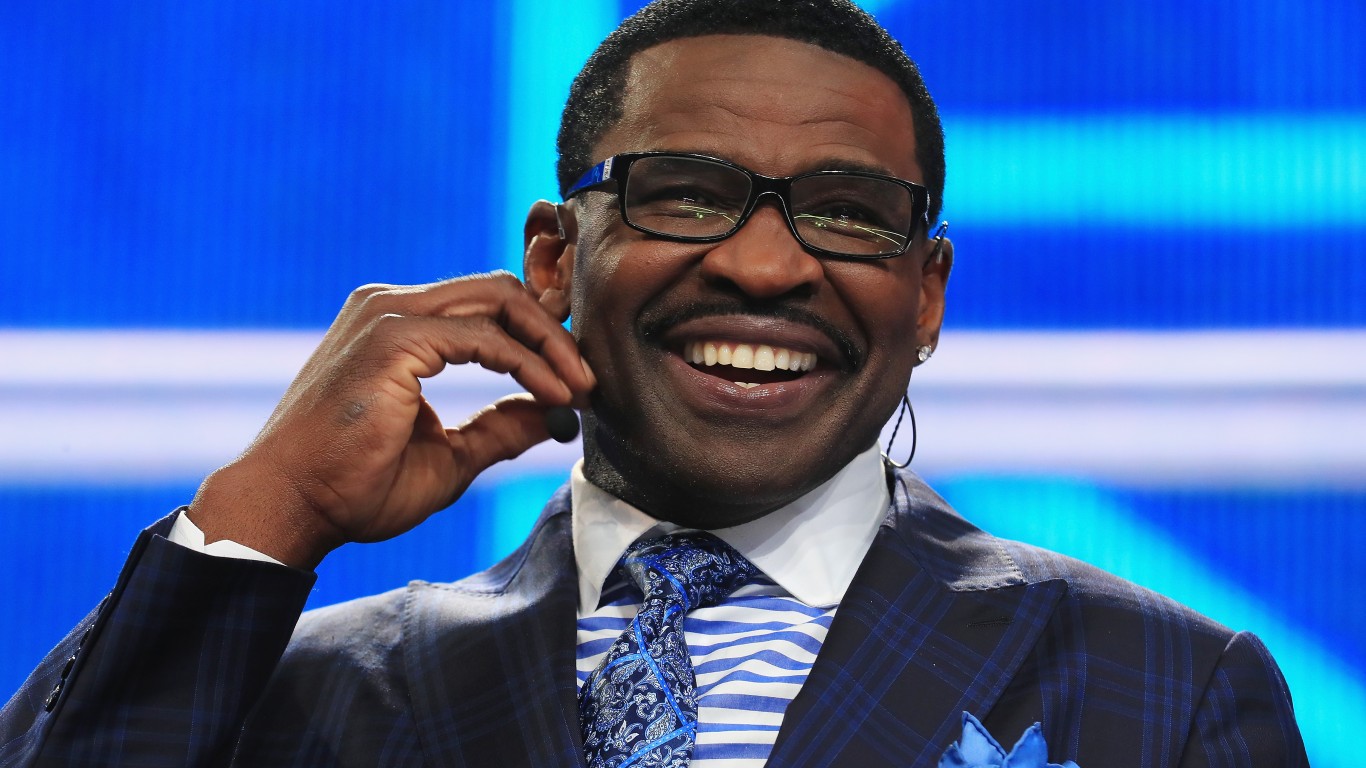
12. Michael Irvin
> League: NFL
> Position, Team: Wide receiver, Dallas Cowboys
> Career: 1988-1999
> Injury: Spine
Going into the 1999 NFL season, Dallas Cowboys wide receiver Michael Irvin seemed poised for another great year. But his season — and career — was cut short when he was hit hard after a reception in Philadelphia against the Eagles. Irvin sustained a spinal cord injury and was wheeled off the field on a stretcher. The hit did not cause Irvin any permanent issues, but it was the last play of Irvin’s Hall of Fame career.
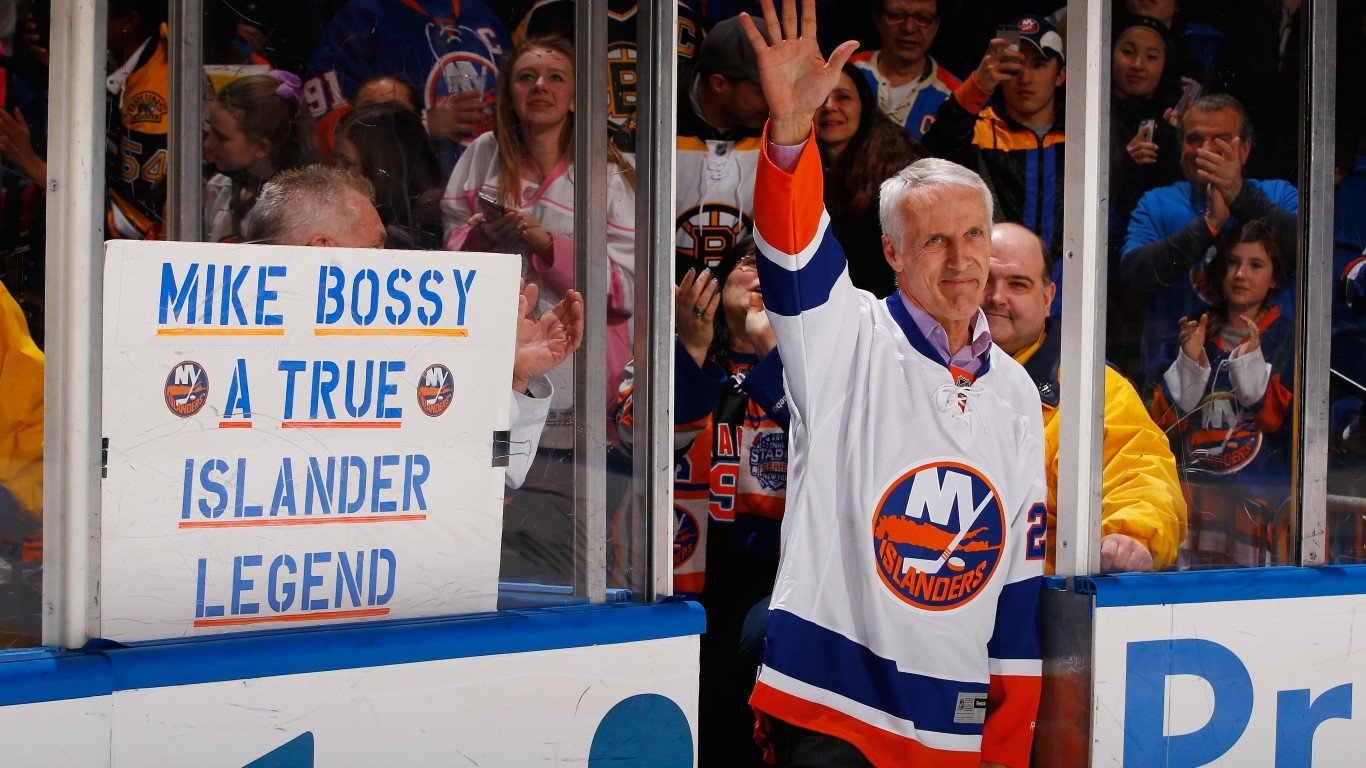
13. Mike Bossy
> League: NHL
> Position, Team: Winger, New York Islanders
> Career: 1977-1987
> Injury: Back
Mike Bossy is one of the greatest pure shooters in hockey history, leading the New York Islanders in goals during all four of the team’s Stanley Cup championship seasons in the early 1980s. Bossy scored at least 50 goals in each of his first nine seasons, a streak no NHL player has ever matched. In his 10th and final year, Bossy scored 38 goals — a sign that his long-ailing back had finally given out. Bossy retired at age 30, but his 10 amazing seasons were enough to get him into the Hall of Fame.
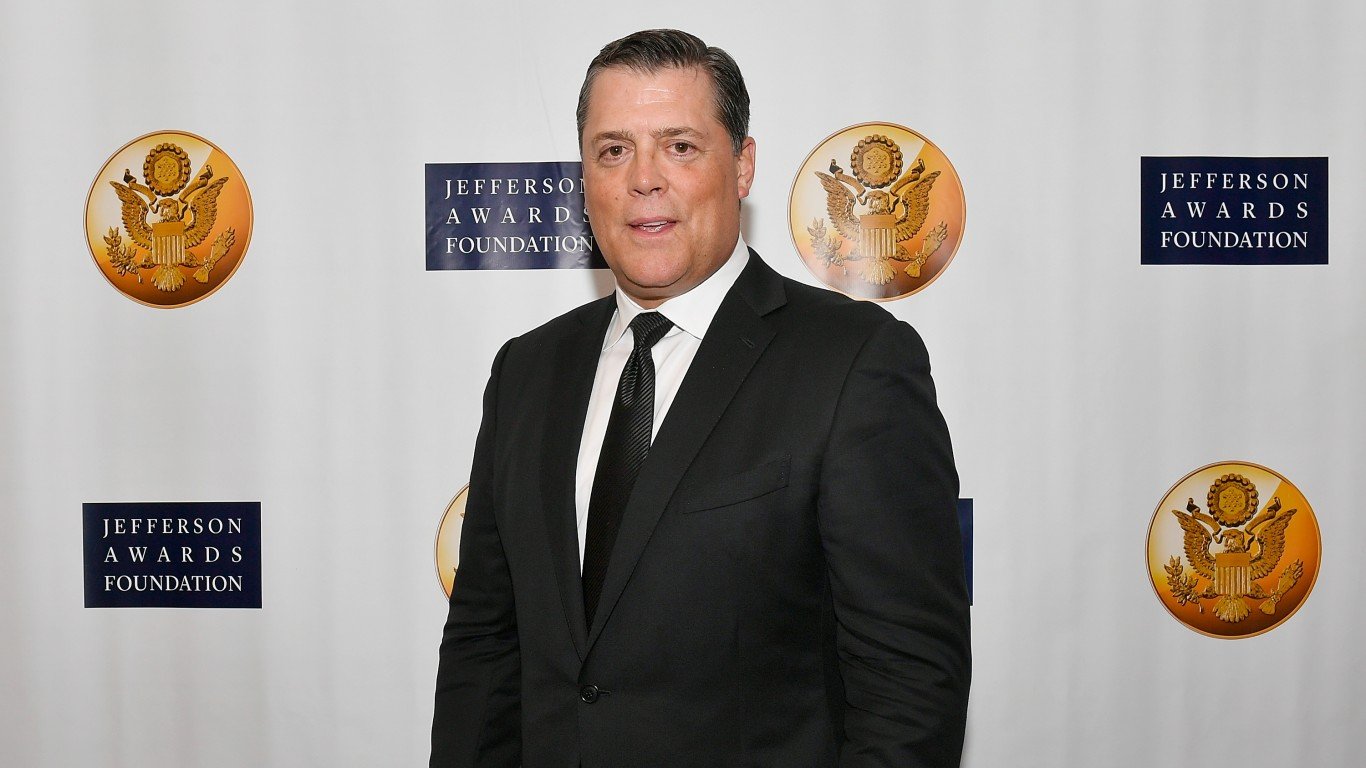
14. Pat LaFontaine
> League: NHL
> Position, Team: Center, Buffalo Sabres
> Career: 1984-1998
> Injury: Head
Pat LaFontaine was a sturdy, dependable player during his eight-year run with the New York Islanders, but repeated concussions cut into his later career with the Buffalo Sabres. He suffered at least six concussions during his career, leaving him with depression and anger issues. LaFontaine retired after one final concussion in 1998.
[in-text-ad-2]
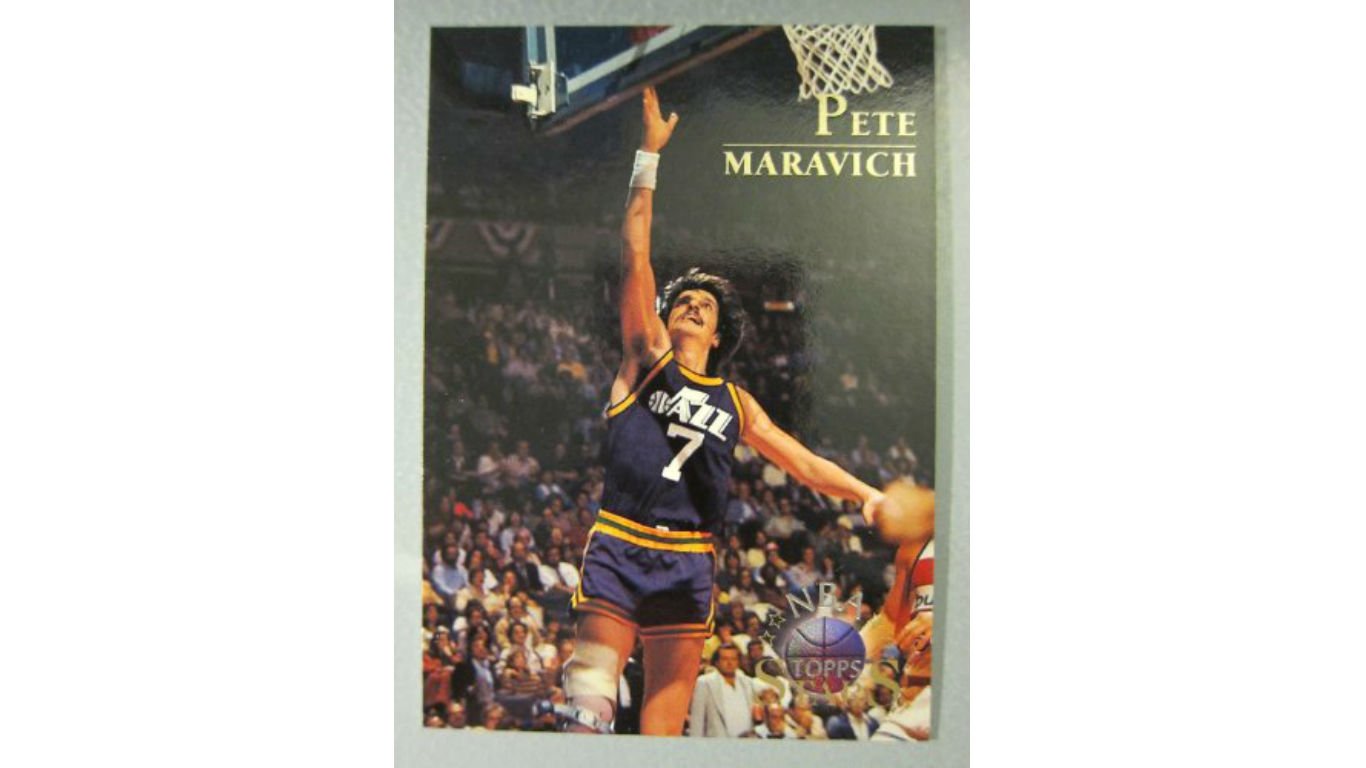
15. Pete Maravich
> League: NBA
> Position, Team: Shooting guard, New Orleans Jazz
> Career: 1970-1980
> Injury: Knee
Pete Maravich is one of the most prolific scorers in basketball history. He averaged 44.5 points per game in one college season and continued his hot shooting in the NBA. Maravich averaged 31.1 points per game during the 1976-1977 season, the best of his career. The next year, he suffered a serious knee injury and missed a large portion of the season as well as the next. Maravich could never play a full season again and retired after a short stint with the Boston Celtics in 1980.

16. Pete Reiser
> League: MLB
> Position, Team: Outfielder, Brooklyn Dodgers
> Career: 1940-1942, 1946-1952
> Injury: Various
Pete Reiser is sometimes called “the best who never was.” Reiser hit .343 at just 22 years old, seemingly destined for success. He was admired for his all-out style of play, but it ultimately cost him his career. He often crashed into the outfield wall chasing down fly balls and suffered a litany of injuries. He dislocated his shoulder, broke his collarbone, and was knocked unconscious an estimated five times. He also broke both ankles and injured leg muscles and ligaments running and sliding. Reiser also served in the Army during World War II, taking three more years out of an already abbreviated career.
[in-text-ad]
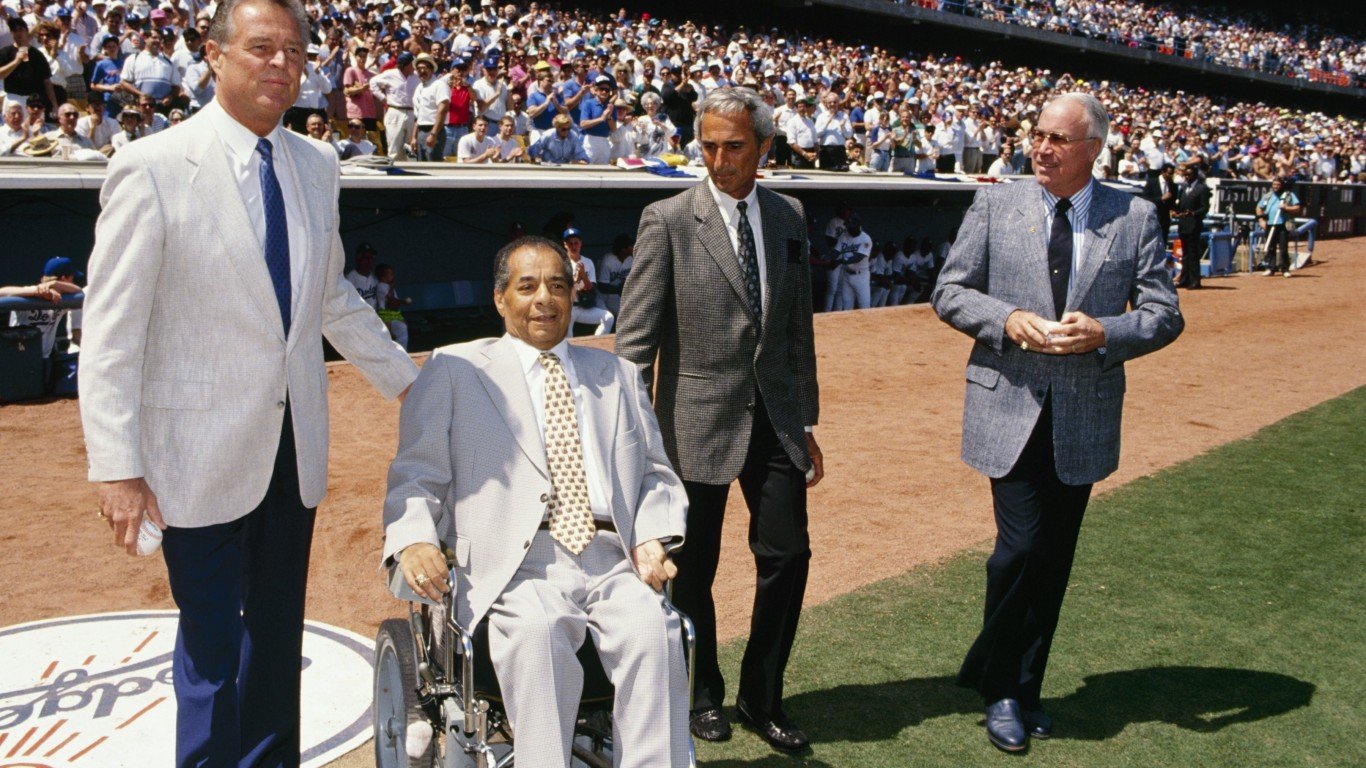
17. Roy Campanella
> League: MLB
> Position, Team: Catcher, Brooklyn Dodgers
> Career: 1948-1957
> Injury: Spine
Catcher Roy Campanella didn’t make it to the Major Leagues until 1948 because black players weren’t allowed in the majors. Once he was allowed on the Brooklyn Dodgers, “Campy” had an immediate impact and made the All-Star team in his first eight full seasons. He was also named MVP three times and helped the Brooklyn Dodgers win the 1955 World Series. Campanella’s career was cut short by a devastating car accident that paralyzed him below the shoulders. Though he played just 10 seasons, Campanella was inducted to the Hall of Fame.
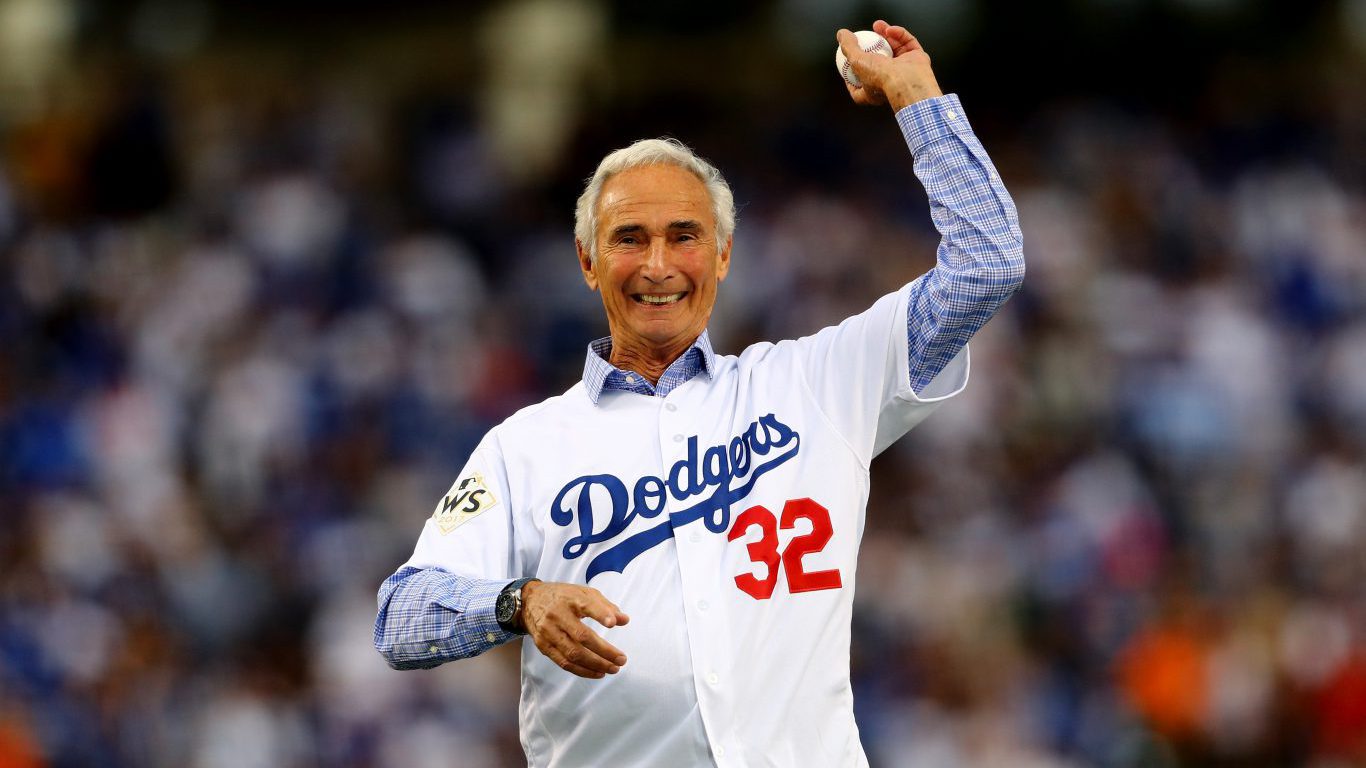
18. Sandy Koufax
> League: MLB
> Position, Team: Pitcher, Los Angeles Dodgers
> Career: 1955-1966
> Injury: Elbow
When a player is nicknamed “The Left Arm of God,” you know he’s a great pitcher. Sandy Koufax debuted with the Brooklyn Dodgers at 19 years old, but his career really took off when he was 25. That year, Koufax made his first of six consecutive All-Star teams. He went on to win three Cy Young awards and had the lowest ERA in the National League five times. During his final three years, Koufax battled through a severely arthritic elbow. Though he posted a 27-win season with a 1.73 ERA in his final year on the mound, Koufax had to hang up his spikes at age 30 to avoid permanent damage to his arm.
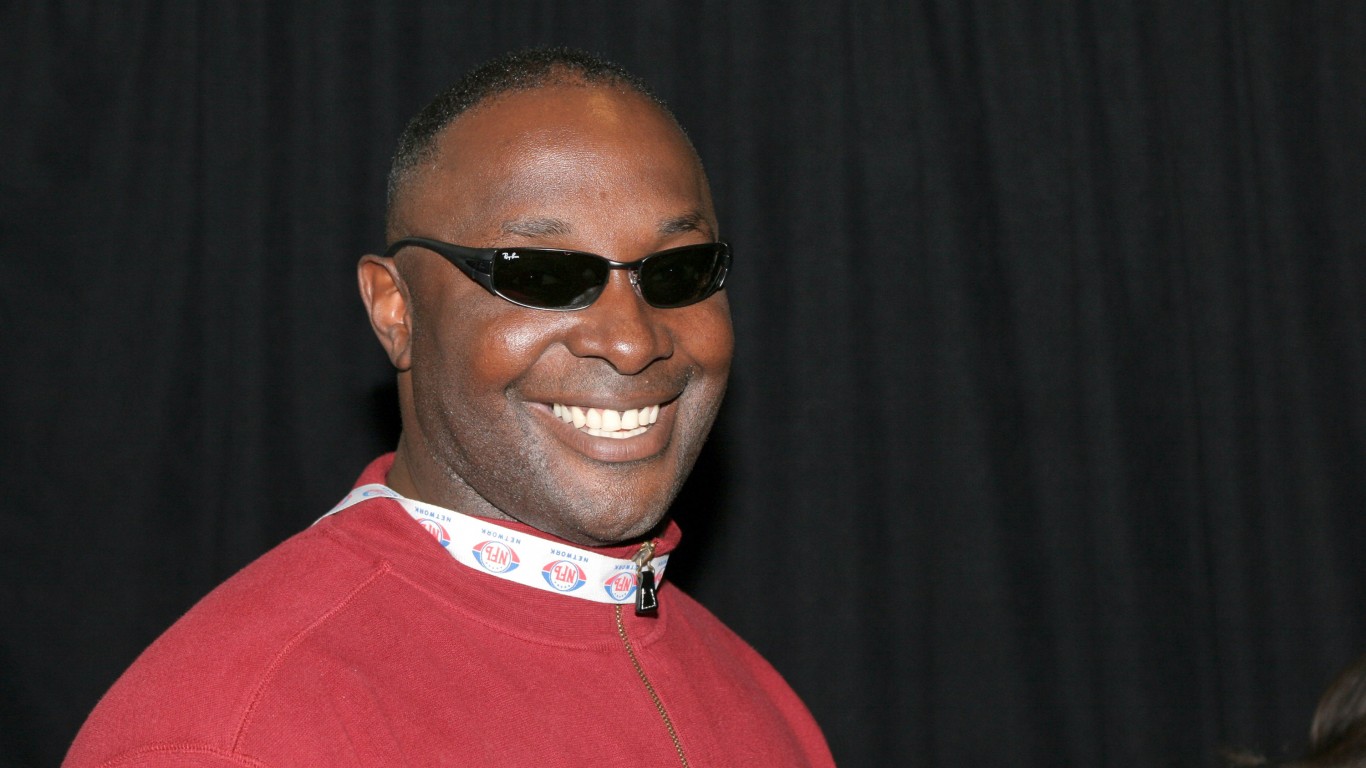
19. Sterling Sharpe
> League: NFL
> Position, Team: Wide receiver, Green Bay Packers
> Career: 1988-1994
> Injury: Neck
Before brain and spinal cord injuries in the NFL were huge topics of discussion in the sports world, Sterling Sharpe, one of the NFL’s brightest stars, was forced to retire to avoid risking permanent damage to his spine. Sharpe teamed up with Green Bay Packers quarterback Brett Favre to become the best wide receiver in the league in the early 1990s, leading all other receivers in catches, yards, and touchdowns in 1992. But the tandem was split up after a series of hits loosened two of Sharpe’s vertebrae in 1994. He was advised to retire and left the game in his prime at age 29.
[in-text-ad-2]
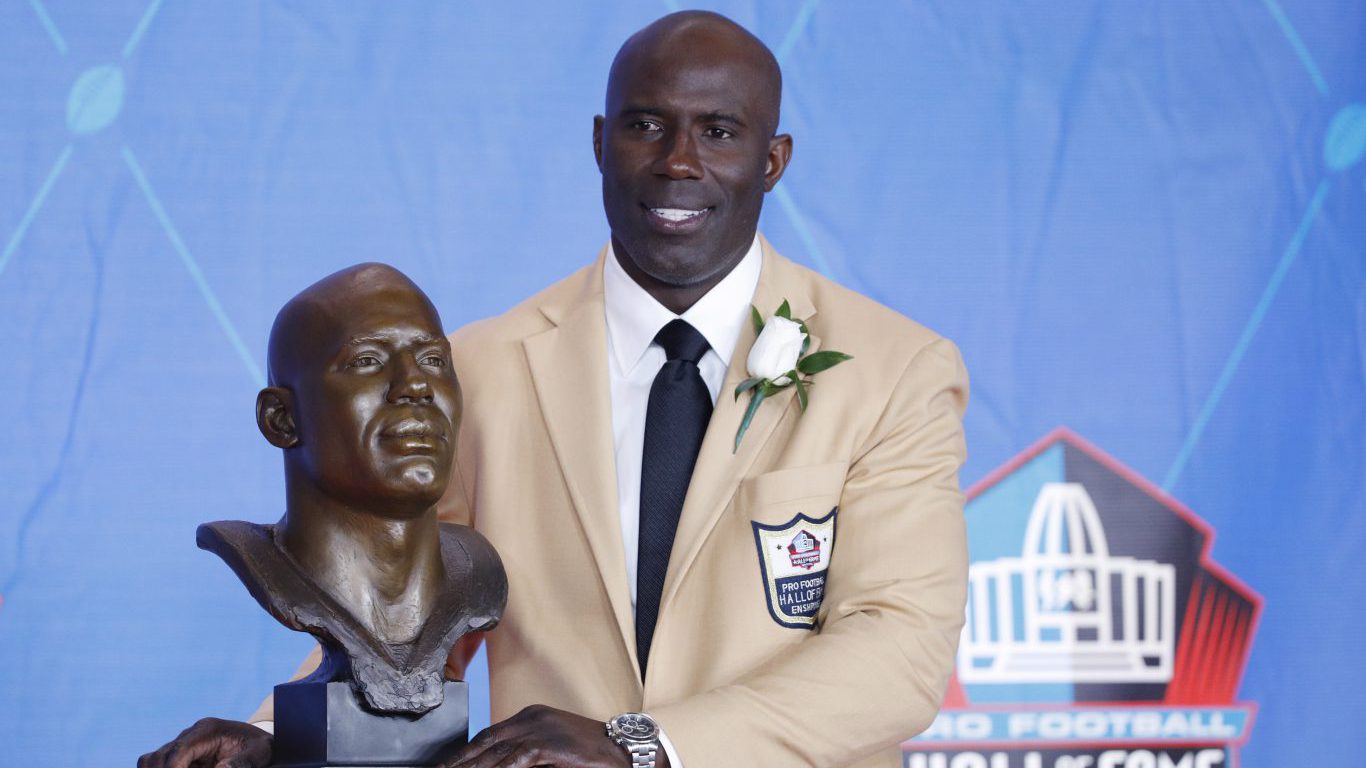
20. Terrell Davis
> League: NFL
> Position, Team: Running back, Denver Broncos
> Career: 1995-2001
> Injury: Knee
The career of Denver Broncos running back Terrell Davis can be split into two parts: before and after his 1999 injury. Before 1999, Davis made the Pro Bowl and All-Pro team in three of four seasons. He also won two Super Bowls and an MVP. He rushed for at least 1,000 yards each year, including in 1998, when he rushed for a whopping 2,008 yards. But in 1999, Davis suffered a devastating knee injury, tearing his ACL and MCL while also damaging his knee cartilage. He could never play more than half a season afterwards and retired in 2001.

21. Tony Conigliaro
> League: MLB
> Position, Team: Outfielder, Boston Red Sox
> Career: 1964-1967, 1969-1971, 1975
> Injury: Eye / face
Tony Conigliaro was a promising young slugger until a freak accident derailed his baseball career. In 1964, Conigliaro hit 24 home runs at age 19 — the record for most home runs hit by a teenager. He became the youngest player to lead the American League in homers when he hit 32 long balls at age 20. In 1967, a pitch hit Conigliaro in the face, breaking his cheek and damaging his left eye. After missing the entire 1968 season, he attempted a comeback. It looked like he was returning to his old form, but his sight continued to deteriorate and he retired in 1971. After another brief comeback attempt in 1975, Conigliaro left baseball for good.
[in-text-ad]
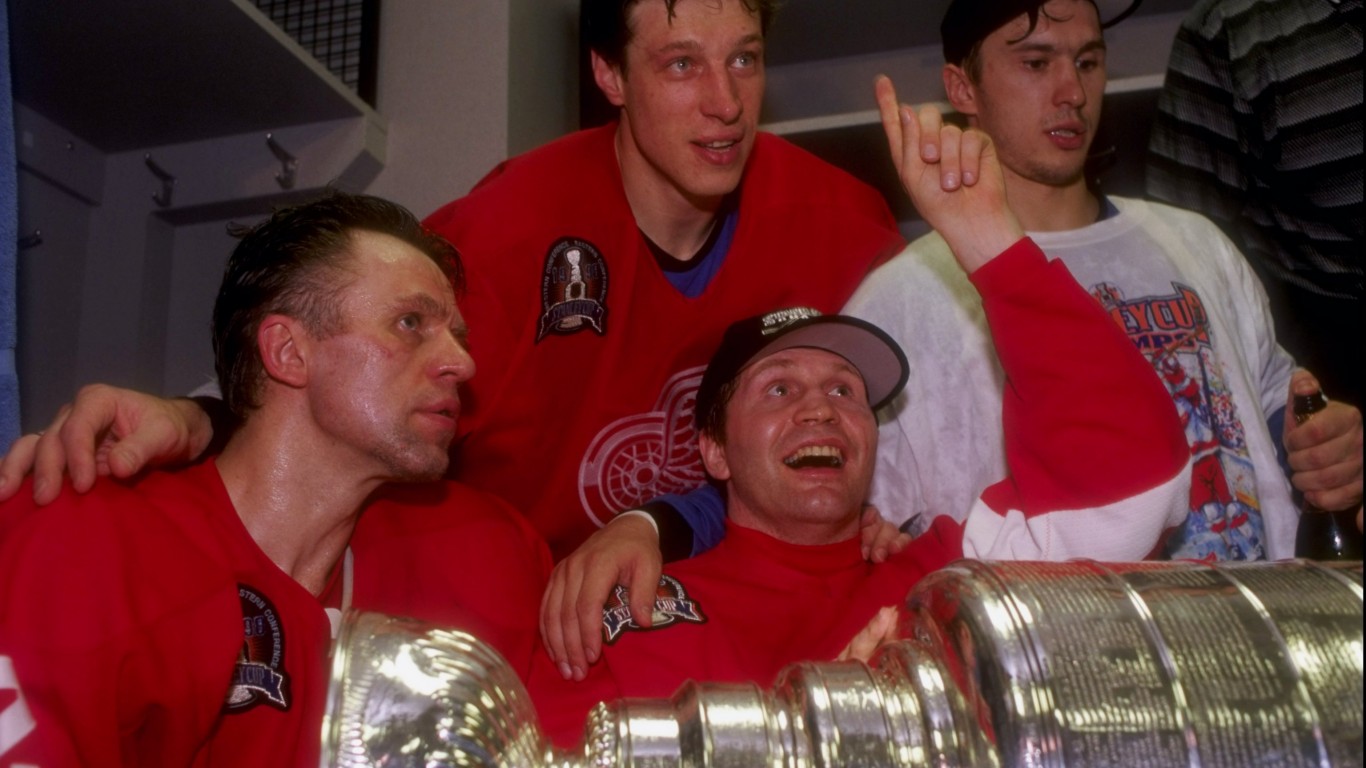
22. Vladimir Konstantinov
> League: NHL
> Position, Team: Defenseman, Detroit Red Wings
> Career: 1991-1997
> Injury: Head
In 1997, Vladimir Konstantinov helped Detroit win its first Stanley Cup in decades, kickstarting a dynasty. Tragically, he was seriously injured in a limousine crash while celebrating with a teammate. The wreck sent Konstantinov into a coma for weeks. Though he later woke up, his speech and motor functions were permanently impaired and he never played hockey again. The Red Wings won their second consecutive Stanley Cup in 1998 and brought a wheelchair-bound Konstantinov onto the ice to celebrate with the team.
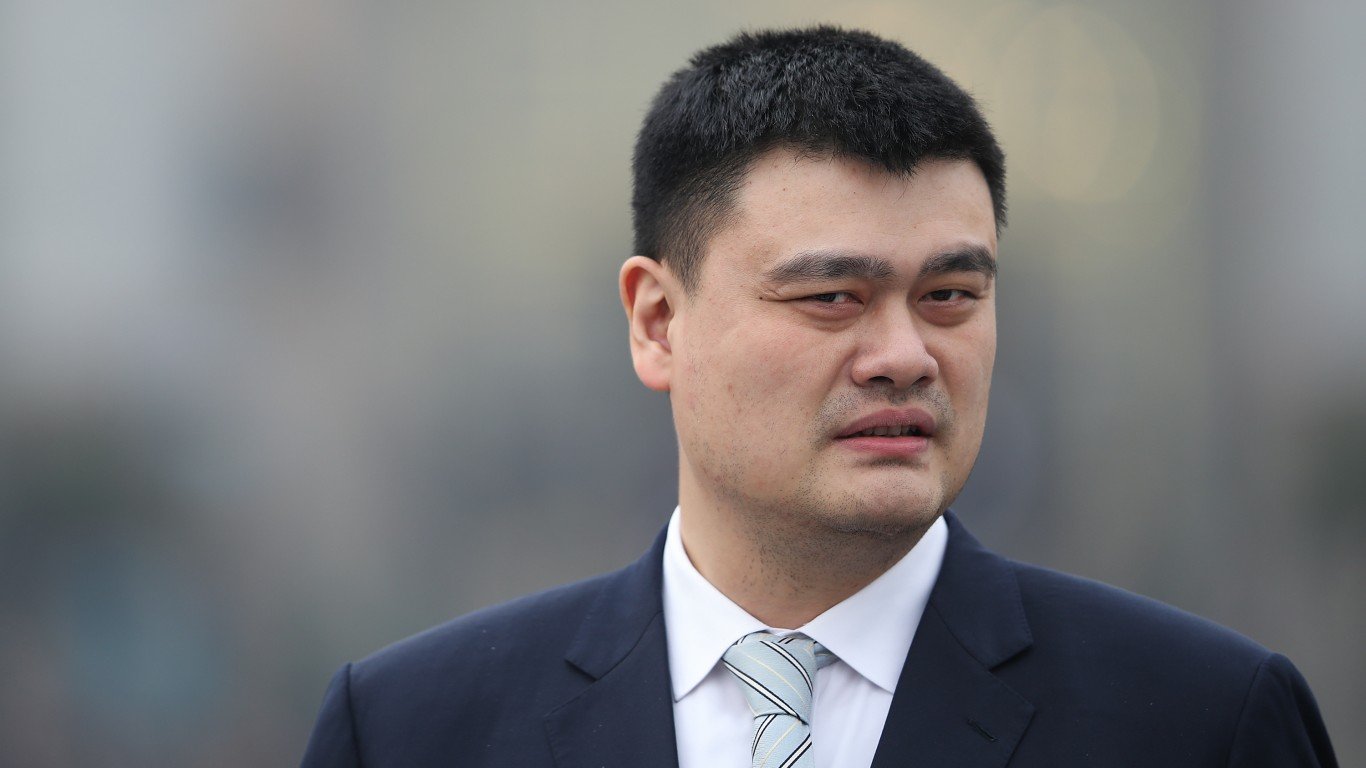
23. Yao Ming
> League: NBA
> Position, Team: Center, Houston Rockets
> Career: 2002-2009, 2010
> Injury: Foot
At 7’6”, Yao Ming wowed NBA fans with a dazzling combination of size and shooting touch. The Houston Rockets center got better and better each year, until foot problems hampered his development. After staying healthy in his first three seasons, foot injuries cost Ming large chunks of subsequent seasons. He missed the 2009 playoffs and had to sit out the entire 2009-2010 season. He attempted to come back the next year but could only play five games before the injuries became too much and he had to call an end to his Hall of Fame career.
Essential Tips for Investing: Sponsored
A financial advisor can help you understand the advantages and disadvantages of investment properties. Finding a qualified financial advisor doesn’t have to be hard. SmartAsset’s free tool matches you with up to three financial advisors who serve your area, and you can interview your advisor matches at no cost to decide which one is right for you. If you’re ready to find an advisor who can help you achieve your financial goals, get started now.
Investing in real estate can diversify your portfolio. But expanding your horizons may add additional costs. If you’re an investor looking to minimize expenses, consider checking out online brokerages. They often offer low investment fees, helping you maximize your profit.
Thank you for reading! Have some feedback for us?
Contact the 24/7 Wall St. editorial team.

